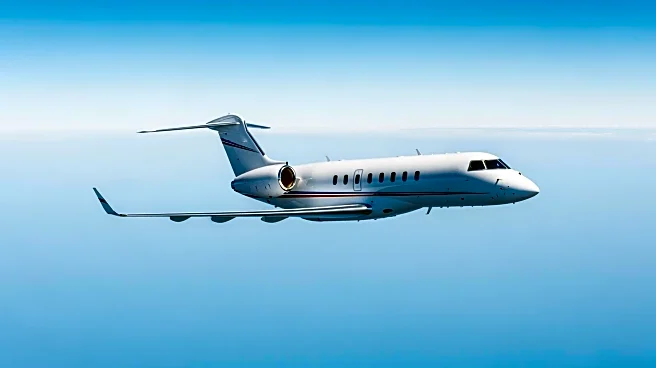What's Happening?
ExecuJet MRO Services South Africa has completed a series of installations for Automatic Dependent Surveillance-Broadcast (ADS-B) systems across various business jet types. This initiative follows a directive
from the South African Civil Aviation Authority (SACAA), which mandates that all aircraft operating in South African airspace must be ADS-B Out compliant. The installations were carried out by ExecuJet's avionics team at Lanseria International Airport, covering aircraft such as Bombardier, Learjet, Embraer, Hawker, and Beechcraft platforms. The upgrades include fitting ADS-B/Mode S 1090 MHz Extended Squitter transponders, enhancing real-time tracking, and improving airspace management safety and efficiency.
Why It's Important?
The implementation of ADS-B systems is crucial for enhancing the safety and efficiency of airspace management. By ensuring compliance with SACAA directives, ExecuJet is contributing to improved real-time tracking capabilities, which are vital for air traffic control and collision avoidance. This move aligns with international standards, potentially influencing other regions to adopt similar measures. Aircraft owners and operators benefit from increased operational safety and compliance with global aviation standards, which can lead to smoother international operations and reduced risk of regulatory penalties.
What's Next?
ExecuJet plans to continue upgrading additional aircraft before the end of the year, ensuring broader compliance with the SACAA directive. As an authorized dealer for major global avionic equipment manufacturers, ExecuJet is well-positioned to support further complex avionic upgrades. This ongoing effort may prompt other aviation service providers to follow suit, potentially leading to widespread adoption of ADS-B systems across different regions. The aviation industry may see increased collaboration between manufacturers and service providers to meet evolving regulatory requirements.
Beyond the Headlines
The push for ADS-B compliance reflects a broader trend towards modernization in aviation technology, emphasizing safety and efficiency. This development may encourage further advancements in avionics, such as enhanced GPS systems and integration with global navigation satellite systems. The long-term impact could include more streamlined air traffic management and reduced environmental impact through optimized flight paths.













